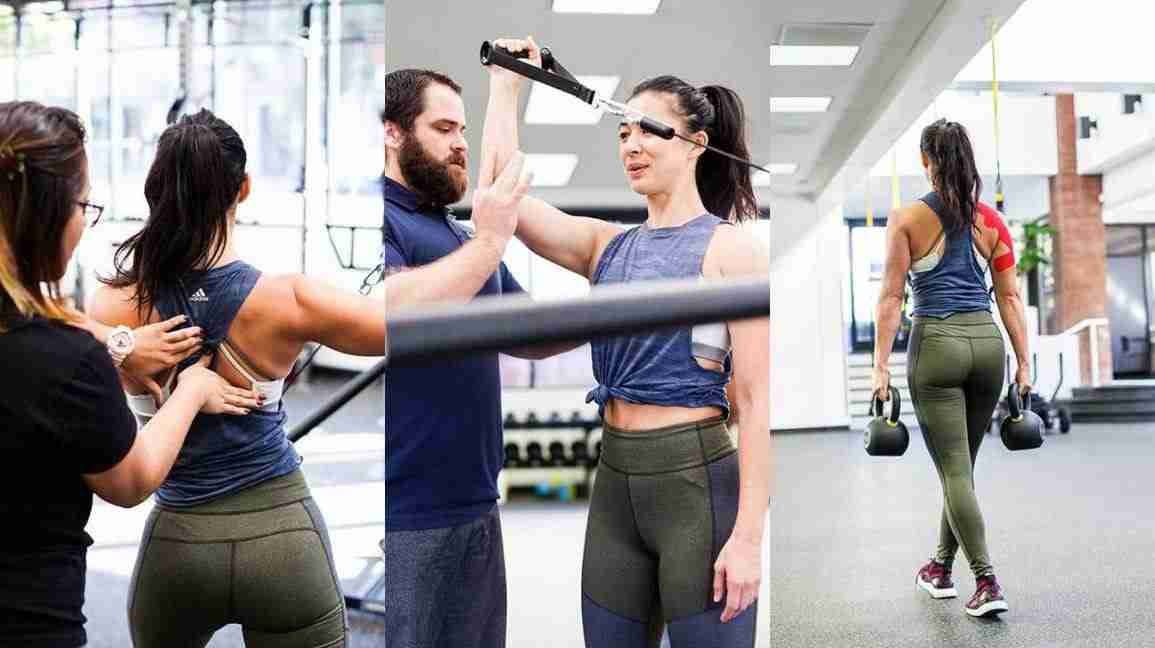Health and wellness touch everyone’s life differently. This is one person’s story.
I’d say almost every person I know has an injury. But for some reason, we don’t usually call them “injuries.”
“I have a knee thing.”
“A bum shoulder.”
“A bad hamstring.”
“A sensitive wrist.”
They’re minor issues that flare up and settle down like an annoying cold or allergy season. I’m with you — I’ve had a “shoulder thing” for years. There wasn’t a single event that created the pain, but rather years and years of pushing my shoulder joint to its limit without identifying or acknowledging the problem.
When I was young, my shoulder flexibility was my “party trick.” I’d pop my double-jointed shoulder blades out of my back and gross friends out with pride. In my early teen years, I was an all-star cheerleader. I was throwing and lifting my teammates over my head before I could even drive!
There were a few instances when my shoulder slid out and back into the socket, but I recovered within minutes and persisted. I then started dancing, eventually fulfilling my dream of dancing professionally behind pop stars, in commercials and on TV.
I was lucky enough to be cast in a television series called “Hit the Floor,” where I play a NBA cheerleader. Ten years after my grade school cheer days, I found myself lifting castmates over my head again — but this time it was my job.
I had an entire crew of people, a television network, cast of actors, and a writing team counting on my shoulder’s ability to flip my friend perfectly, take after take, and for multiple camera angles.
The repetitive nature of shooting a television show quickly revealed the weakness and instability of my entire shoulder and back. I’d leave rehearsal and shoot days feeling like my arm was hanging by a thread. When our third seasonwrapped, I knew it was time to see a doctor.
He told me I had a posterior labral tear in my right shoulder. The labrum is what stabilizes the shoulder socket and can’t repair itself. It can only be reattached with surgery.
As a dancer, my body is my moneymaker. And undergoing surgery along with extensive recovery time was simply not an option. While not an easy decision — and not one I’d recommend without thorough and extensive conversations with your doctor — forgoing surgery was ultimately the best choice for me.
Instead of surgery, I needed to make it my mission to understand how my body works, and what adaptations I could make to both how I think about, and use, my body. Doing so could — and did — help me learn how not to aggravate my “thing,” and allow my shoulder to recover and thrive while also still doing the job that I love.
Many of us avoid the doctor because we don’t want to face the fact that the “thing” you’ve been living could now be at its worst-case scenario. Rather than give that “thing” a name, we surround ourselves with temporary fixes and $40 Thai massages.
While it’s a doctor’s job to err on the side of caution, know that there’s always more than one road to recovery. If you have an injury you’ve been dealing with, perhaps you could benefit from the questions I ask(ed) myself about my own body.
Have you seen a doctor or specialist? I waited to get a professional opinion because I didn’t want to hear the answer. Without the ability to fully understand what’s causing your pain, you can’t create a plan to fix it.
Ask yourself, or your doctor or therapist: Can the muscle groups be strengthened? Can they be stretched? I had no idea my scapula, mid, and lower trapezia were so weak, which is likely what led to tearing my labrum in the first place.
My physical therapy plan is all about building the strength of these areas, and gaining mobility in the front side of my shoulder.
Learn how to explain the pain: Where is it? What kind of movements cause the pain? Learning how to identify what causes the pain will help you and your doctors form a road to recovery. This awareness will also help you gauge whether your pain level is increasing or decreasing.
Everyday injuries are often built from repetitive action. Perhaps your keyboard, desk chair, footwear, or heavy purse are affecting your injury. I do a five-minute warmup before I go to work, which helps activate the weak muscles that support my instable labrum. I also use kinesiology tape to support my shoulder on long dance days.
You don’t want a workout to aggravate your injury. Take a step back to consider how your exercise may be affecting your injury. For example, I’ve come to realize that hot yoga heats my body up so much that it allows me to sink too deep into the flexibility of my shoulders, which can increase the tear of my labrum. Additionally, I need to watch myself in kettlebell-heavy workouts. Swinging heavy weights forward and out really pulls on the shoulder joint.
Like most things in life, sometimes it’s easier to ignore a potential issue. That being said, after actually facing the problem that had been plaguing me for years, I now feel prepared rather than scared. I’m excited to be heading into production for the fourth season of “Hit the Floor” with an arsenal of knowledge and new level of awareness of my body and its limits.
Meagan Kong is living her dream of being a professional dancer in Los Angeles and around the world. She’s shared the stage with stars like Beyoncé and Rihanna, and appeared on shows such as “Empire,” “Hit the Floor,” “Crazy Ex-Girlfriend,” and “The Voice.” Kong has represented brands like Foot Locker, Adidas, and Powerade, and shares what she’s learned about fitness and nutrition on her blog, You Kong Do It. She continues to lead by example, hosting and teaching at events around Los Angeles.

